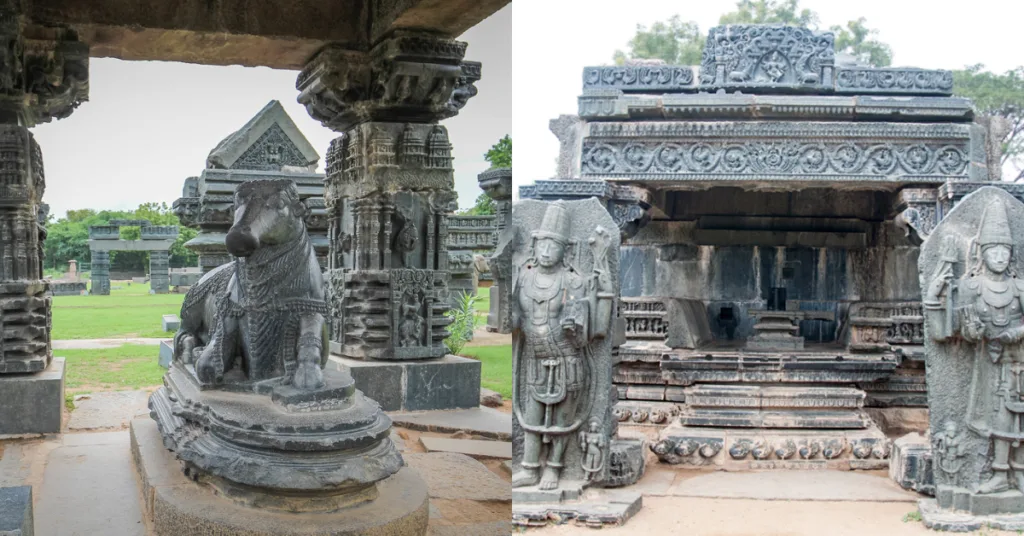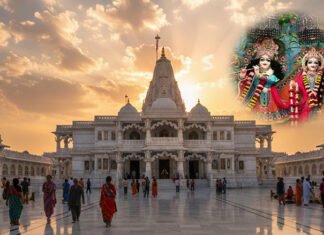Introduction:
Warangal Fort is one of the must-visit attractions in Warangal, a city rich in history and culture. Built on the hillock Ekashila in the 13th century, this fort is an architectural masterpiece of the Kakatiya Dynasty. Constructed by King Ganapatideva and later completed by his daughter Rani Rudrama Devi, Warangal Fort symbolizes the region’s grandeur during the Kakatiya Kingdom’s reign.
Located in the southeastern part of Warangal city, this is a prominent landmark in Telangana State, showcasing impressive architectural excellence and historical significance. Built with three layers of fortification for maximum safety, Orugallu Fort captivates every visitor with its majestic structure. Although in ruins today, the remains still display mesmerizing craftsmanship and breathtaking artistry in the motifs, sculptures, and stonework. Moreover, the intricate details further highlight the skilled artisanship. Lastly, the overall composition of the site continues to captivate visitors. The fort has witnessed many battles, and invaders have destroyed some parts over time.
A visit to Warangal Fort will surely leave you fascinated by its graceful architecture and the brilliance still visible in its ruins. The Archaeological Survey of India has recognized the remains of the fort as a monument of national importance.
Also read: An Exclusive Journey of Warangal Museum History:
History of Warangal Fort
The construction of Warangal Fort began in the 13th century under the rule of Kakatiya King Ganapatideva. The fort’s history is closely linked with the history of the Kakatiya dynasty. King Ganapatideva moved the capital of the Kakatiya kingdom to Warangal from Hanamkonda, located about 12 km away. His daughter Rani Rudrama Devi, who succeeded him, oversaw the completion of the fort.
The last Kakatiya ruler, King Prataparudra II (also known as Rudradeva II), made significant additions to the fort. Furthermore, he continued to enhance its structure, and then, besides these improvements, he implemented additional fortifications. Moreover, his contributions were equally important to the fort’s grandeur. Finally, his efforts marked the last major developments of the fort during the Kakatiya dynasty.
The fort withstood numerous attacks, leading to the destruction of various parts. In 1309, Malik Kafur, a general of Alauddin Khilji, attacked the fort during Prataparudra II’s rule with an army of around 100,000 men. The battle lasted for many months, and the fort was defended by King Prataparudra II and his army. Furthermore, the fort was attacked multiple times by the Sultans of Delhi.
“Then, it came under the rule of the Hyderabad Nizams. Moreover, this transition marked a significant change in the fort’s history.”
Architecture of Warangal Fort
Warangal Fort is renowned for its structural beauty. The fort covers an area of around 19 km and features about 45 towers and pillars. The most striking part of the fort is the ‘Gateway of Glory,’ a popular subject in Orugallu Fort images. This main gateway consists of four impressively carved massive pillars, each built from a single rock. Standing around 30 feet high, these pillars display intricate carvings and are known as Kirti Toranas, representing South Indian architectural style.
In the center of the fort, there is a temple dedicated to Mother Earth, named Swayambhudevi Alayam, built by the Qutub Shahi Kings. Its exquisite carvings attract every visitor. Another notable temple is the Shambhulingeshwara Temple, dedicated to Lord Shiva, located opposite the open-air museum in the fort’s center.
orugallu Fort boasts three layers of fortification. The first layer, built by Rani Rudrama Devi, is an earthen wall with a diameter of 2.4 km, surrounded by a 150-foot wide moat. The second layer is a stone wall, 1.21 km in diameter, made of massive granite stones fitted together without mortar, showcasing architectural brilliance. This inner stone wall, built by King Ganapatideva and heightened by Rani Rudrama Devi, is 29 feet high with 45 massive rectangular towers. The third layer is a mud wall with a diameter of 12.5 km, encircling the present Warangal city.
Also read: Experience the Spiritual Majesty of Bhadrakali Temple in Warangal
Remains of Warangal Fort
The central part of Warangal Fort, recognized as an archaeological zone, contains many ruins. Visitors can see the remains of a Shiva temple, wall slabs, entrance pillars, ceiling panels, a mihrab relic, and various small shrines. The temple’s main deity, a Linga with four faces of Lord Shiva, is housed in a shrine in the fort’s southern complex, where regular prayers are held. Within the fort complex, there are ponds and various small temples. Moreover, these remains offer insights into the fort’s structure and the Kakatiya era. Furthermore, inscriptions on the pillars and walls detail the period during the Kakatiya kings’ reign.

Timings of Warangal Fort:
- Warangal Fort is open to visitors every day of the week from 10:00 AM to 7:00 PM. This allows ample time for tourists to explore the fort’s majestic ruins and learn about its rich history.
Entry Fees of Warangal Fort:
- The entry fee for visiting Warangal Fort is quite affordable. For Indian nationals, the cost is Rs. 15 per person. Foreign tourists are charged Rs. 200 per person, reflecting the fort’s status as a site of significant historical and cultural interest. If you plan to capture your visit with a video camera, there is an additional charge of Rs. 25.
Details of Sound and Light Show in Warangal Fort:
- One of the highlights of visiting Warangal Fort is the Sound and Light Show, which brings the fort’s history to life through narration, music, and illuminated scenes. This captivating show has an entry fee: of Rs. 40 for adults and Rs. 20 for children. The show provides a unique and engaging way to understand the fort’s past and the tales of the Kakatiya Dynasty.
“Need help with booking tickets online, finding accommodation, or getting more information? Click here.“
Conclusion:
Warangal Fort is a historical treasure that offers a glimpse into the luxury and architectural brilliance of the Kakatiya Dynasty. Despite its ruins, the fort’s remains showcase the craftsmanship and artistry of the period, making it a must-visit for history enthusiasts and tourists alike. First, the intricate carvings reflect the skill of ancient artisans. Furthermore, the grand gateways and towers add to its splendor. Next, the expansive courtyards and temples illustrate its historical significance. Moreover, the fort’s architecture is a testament to the region’s rich cultural heritage. Lastly, a visit to Warangal Fort will undoubtedly leave you in awe of its historical significance and architectural beauty.
Frequently Asked Questions:
Answer: Warangal Fort is open daily from 10:00 AM to 7:00 PM, allowing visitors ample time to explore the site.
Answer: The entry fee is Rs. 15 for Indian nationals and Rs. 200 for foreign tourists. There is an additional charge of Rs. 25 for using a video camera.
Answer: The Sound and Light Show is a captivating display that narrates the fort’s history with music and illuminated scenes. The entry fee is Rs. 40 for adults and Rs. 20 for children.
Answer: Warangal Fort was constructed in the 13th century by King Ganapatideva of the Kakatiya Dynasty and later completed by his daughter, Rani Rudrama Devi.
Answer: The fort is renowned for its three-layered fortifications, the majestic ‘Gateway of Glory’ with intricately carved pillars, and various temples, including the Swayambhudevi Alayam and Shambhulingeshwara Temple.











